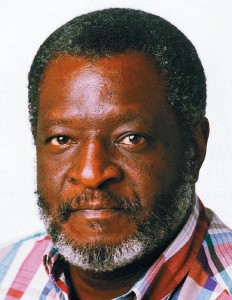
“I’m not just going to sit back if the only message from some of these folks is no on everything, and sit around and twiddle my thumbs for the next 1,200 days.” “But there’s not an action that I take that you don’t have some folks in Congress who say that I’m usurping my authority. Some of those folks think I usurp my authority by having the gall to win the presidency.”–President Obama in an interview with The Times.
Today’s Live Wire: Quick Links
- The End of Florida Oranges
- Stand Your Ground Degeneracy
- Rep. Steve King’s Bigoted Cantaloupe Brain
- Arizona’s Solar Power Industry, Clouding Over
- Florida’s School-Security Freak-Out Continues
- Florida’s Babel Tower: Dumping Sand on Beaches
- Charter Schools as the New Segregation
- Separation of Church and Skin
- Mick Jagger On Drugs
![]()
The End of Florida Oranges as We Know Them
 Citrus Greening is a disease ravaging orange groves in the world, and now in Florida. Once the disease strikes, fruit turn sour and become inedible. There is no cure. From The Times: “With a precipitous decline in Florida’s harvest predicted within the decade, the only chance left to save it, [Ricke Kress, president of Southern Gardens Citrus, in charge of two and a half million orange trees and a factory that squeezes juice for Tropicana and Florida’s Natural] believed, was one that his industry and others had long avoided for fear of consumer rejection. They would have to alter the orange’s DNA — with a gene from a different species. Oranges are not the only crop that might benefit from genetically engineered resistance to diseases for which standard treatments have proven elusive. And advocates of the technology say it could also help provide food for a fast-growing population on a warming planet by endowing crops with more nutrients, or the ability to thrive in drought, or to resist pests. Leading scientific organizations have concluded that shuttling DNA between species carries no intrinsic risk to human health or the environment, and that such alterations can be reliably tested. But the idea of eating plants and animals whose DNA has been manipulated in a laboratory — called genetically modified organisms, or G.M.O.’s — still spooks many people. Critics worry that such crops carry risks not yet detected, and distrust the big agrochemical companies that have produced the few in wide use. And hostility toward the technology, long ingrained in Europe, has deepened recently among Americans as organic food advocates, environmentalists and others have made opposition to it a pillar of a growing movement for healthier and ethical food choices.” See the full (and very long and disturbing) story.
Citrus Greening is a disease ravaging orange groves in the world, and now in Florida. Once the disease strikes, fruit turn sour and become inedible. There is no cure. From The Times: “With a precipitous decline in Florida’s harvest predicted within the decade, the only chance left to save it, [Ricke Kress, president of Southern Gardens Citrus, in charge of two and a half million orange trees and a factory that squeezes juice for Tropicana and Florida’s Natural] believed, was one that his industry and others had long avoided for fear of consumer rejection. They would have to alter the orange’s DNA — with a gene from a different species. Oranges are not the only crop that might benefit from genetically engineered resistance to diseases for which standard treatments have proven elusive. And advocates of the technology say it could also help provide food for a fast-growing population on a warming planet by endowing crops with more nutrients, or the ability to thrive in drought, or to resist pests. Leading scientific organizations have concluded that shuttling DNA between species carries no intrinsic risk to human health or the environment, and that such alterations can be reliably tested. But the idea of eating plants and animals whose DNA has been manipulated in a laboratory — called genetically modified organisms, or G.M.O.’s — still spooks many people. Critics worry that such crops carry risks not yet detected, and distrust the big agrochemical companies that have produced the few in wide use. And hostility toward the technology, long ingrained in Europe, has deepened recently among Americans as organic food advocates, environmentalists and others have made opposition to it a pillar of a growing movement for healthier and ethical food choices.” See the full (and very long and disturbing) story.
See Also:
- Citrus Disease With No Cure Is Ravaging Florida Groves
- Incurable bacteria citrus greening destroying Florida’s citrus industry

In a related story, from the Times’s excellent Michael van Sickler: “[W]hile the “Gunshine State” finds itself in the crosshairs of world public opinion, the lawmakers who approved “stand your ground” in 2005 have received little, if any, electoral blowback. […] Current state lawmakers who voted for “stand your ground” outnumber those who opposed it by a 4-1 margin. Republicans who approved it are unapologetic. Not one would repeal it now. […] Democrats are far less unified. When SB 436 was signed by then-Gov. Jeb Bush on April 26, 2005, it enjoyed solid bipartisan support. It passed the Senate 39-0, a tally that included 14 Democrats, such as 2014 gubernatorial hopeful Nan Rich. […] Of the 133 lawmakers who voted for the legislation, 48 hold elected office today. A state representative from Miami became U.S. Sen. Marco Rubio. Eight others went on to Congress, where five still serve. State Sen. Jeff Atwater is Florida’s chief financial officer. State Reps. Jeff Kottkamp and Jennifer Carroll ascended to lieutenant governor. Of the 94 representatives who approved it in the Florida House, 16 graduated to the state Senate. […] Another reason for the unanimous Senate support was Sen. Al Lawson, D-Tallahassee, one of seven African-American senators to vote for it. Then the minority leader for the Democrats in the Senate, Lawson said Peaden’s message of self-defense resonated with him because of a 1996 home invasion in which his wife, Delores Lawson, was bound, gagged and assaulted. “For me, it was a self-defense issue,” he said. Lawson said he doesn’t favor repealing the law. Like most Republicans, the Democrat said it didn’t apply in the Zimmerman case. But he said he’s convinced the law should be reviewed following a Tampa Bay Times investigation last year that showed in 200 cases where “stand your ground” was used, nearly 70 percent of those who invoked “stand your ground” to avoid prosecution were successful and defendants were more likely to prevail if the victim is black.”
See Also:
- Zimmerman’s Gunshine State: White Man’s Verdict, Black Men’s Burden
- Obama on Stand Your Ground and Zimmerman Aftermath: “Trayvon Martin Could Have Been Me 35 Years Ago”
- ‘The Struggle Continues’: Civil Rights Generation Shows Palm Coast How It’s Done in 100-Voice March
- The Stand Your Ground Archives
Rep. Steve King’s Bigoted Cantaloupe Brain

See Also:
- Racist Attacks on Mexican-American’s National Anthem Performance Reflect GOP Blinders
- The Thanks and Reverence We Owe Undocumented Immigrants
- “Illegal Immigrants” No More: The Associated Press Ends the Slur
- Obama Rule Gives 1 Million Undocumented Immigrants Clearer Path to Legal Status
Arizona’s Solar Power Industry, Clouding Over
 The Arizona Republic Sunday started a three-part series on a promise yet unfulfilled: “It’s expected that solar energy would thrive in a state where the sun shines. A lot. Those potent rays, abundant open spaces yearning for new jobs, and an emphasis on sustainability have been powerful catalysts for the industry here. Why wouldn’t Arizona be the solar capital of the world? Gov. Jan Brewer has suggested as much many times. Massive new generating plants have been proposed and built in sun-parched swaths of the state. Plans were laid for major factories to assemble solar components. Elected officials praised the potential of the burgeoning industry. Plants are online and humming, and solar is topping more roofs every day. But the state today remains far from the solar job market many had expected it to become. Some of the solar-panel manufacturers that leaders were counting on to produce jobs stumbled as the industry was rocked by international competition, subsidy cuts, a global recession and the typical growing pains of a startup industry. […] Some solar businesses have taken root in the state and are growing. About 300 solar-related businesses have been established in Arizona. And several large solar plants, which generate power for utilities, have been built in the Arizona desert, although the bulk of the jobs generated by those plants have been short-term construction positions. Once the plants are up and running, they require few employees. […] After almost a decade of growth, reality has set in. Today, the industry is at a crossroads. […] Feelings about solar, and subsidies to grow the industry, aren’t uniformly sunny. Utilities, looking into a future with more homes shifting to solar from traditional power, are trying to reduce the credits that have made rooftop solar attractive to customers. Growth in the number of solar plants likely will slow as well. Solana, a massive plant near Gila Bend, will open within weeks and provide enough power that the state’s largest utility, Arizona Public Service Co., won’t need to add much more solar to meet its state requirements. Incentives at the federal level also face an expiration date that could begin to slow new-project development this year. And the talk about being the world’s solar capital? Although it uses much more solar power than most other places, metro Phoenix still gets only about 2 percent of its power from the sun. Most experts predict that more solar opportunities will take hold in the state, but decisions made in the next year could determine the future of the industry, including whether it ever becomes a major job creator and driver of the Arizona economy.” The full story.
The Arizona Republic Sunday started a three-part series on a promise yet unfulfilled: “It’s expected that solar energy would thrive in a state where the sun shines. A lot. Those potent rays, abundant open spaces yearning for new jobs, and an emphasis on sustainability have been powerful catalysts for the industry here. Why wouldn’t Arizona be the solar capital of the world? Gov. Jan Brewer has suggested as much many times. Massive new generating plants have been proposed and built in sun-parched swaths of the state. Plans were laid for major factories to assemble solar components. Elected officials praised the potential of the burgeoning industry. Plants are online and humming, and solar is topping more roofs every day. But the state today remains far from the solar job market many had expected it to become. Some of the solar-panel manufacturers that leaders were counting on to produce jobs stumbled as the industry was rocked by international competition, subsidy cuts, a global recession and the typical growing pains of a startup industry. […] Some solar businesses have taken root in the state and are growing. About 300 solar-related businesses have been established in Arizona. And several large solar plants, which generate power for utilities, have been built in the Arizona desert, although the bulk of the jobs generated by those plants have been short-term construction positions. Once the plants are up and running, they require few employees. […] After almost a decade of growth, reality has set in. Today, the industry is at a crossroads. […] Feelings about solar, and subsidies to grow the industry, aren’t uniformly sunny. Utilities, looking into a future with more homes shifting to solar from traditional power, are trying to reduce the credits that have made rooftop solar attractive to customers. Growth in the number of solar plants likely will slow as well. Solana, a massive plant near Gila Bend, will open within weeks and provide enough power that the state’s largest utility, Arizona Public Service Co., won’t need to add much more solar to meet its state requirements. Incentives at the federal level also face an expiration date that could begin to slow new-project development this year. And the talk about being the world’s solar capital? Although it uses much more solar power than most other places, metro Phoenix still gets only about 2 percent of its power from the sun. Most experts predict that more solar opportunities will take hold in the state, but decisions made in the next year could determine the future of the industry, including whether it ever becomes a major job creator and driver of the Arizona economy.” The full story.
See Also:
- FPL, Progress Energy, Florida’s Nuclear Fraud
- Palm Coast’s Secret Deal With Solar Company: Long Tax Holiday and Other Perks for 180 Jobs
Florida’s School-Security Freak-Out Continues

See Also:
- School Security’s Buy-A-Cop Delusions
- Flagler District Shelves School-Cop Posting in All Elementaries, Reverting to Previous Plan
- Parent at Old Kings Elementary Hires Full-Time Armed Guard at Her $12,000 Expense
Florida’s Babel Tower: Dumping Sand on Beaches

See Also:
- U.S. Corps’ Cost to Rebuild 2.5 Miles of Beach: $39 Million and Up, Storms Not Included
- Between Flagler Beach and the County, a Clash of Visions Over Protecting an Eroding Shore
- Cut-and-Paste: Holmberg Beach Study Falls Short of City Commissioners’ Expectations
Charter Schools as the New Segregation
 Bill Maxwell in the St. Pete Times: “Some advocates used to believe that school choice through charters would help diversify public education despite racially segregated housing patterns. But that has not been happening. […] In most parts of the nation, especially where whites find mandatory busing objectionable, predominantly white charters are being established in suburbia and other communities with high white populations. No matter how we frame the debate, we are talking about contemporary segregation academies — those private schools that proliferated during the 1950s, 1960s and 1970s as a way for whites to circumvent the desegregation order of the Brown vs. Board of Education decision. After these academies took hold, many public schools, especially in the South, were left with mostly black students. Operating with public money, charters are more subtle in determining who attends them. In addition to location and word-of-mouth marketing, many self-select by establishing curricula that appeal to specific groups. Touting their core mission, they do not mention diversity in their recruitment. […] Few critics of charters are willing to state that self-selection is an indication of racism. […] Evidence shows that most recent immigrants prefer schools in which their languages are spoken and that black families are more likely to place their children in racially segregated charter schools than are white families. As long as parents seek the best for their children and as long as income, racial and ethic homogeneity are seen as a sign of quality, diversity will be viewed as an indication of inferiority. Charter schools, therefore, will flourish.” The full column.
Bill Maxwell in the St. Pete Times: “Some advocates used to believe that school choice through charters would help diversify public education despite racially segregated housing patterns. But that has not been happening. […] In most parts of the nation, especially where whites find mandatory busing objectionable, predominantly white charters are being established in suburbia and other communities with high white populations. No matter how we frame the debate, we are talking about contemporary segregation academies — those private schools that proliferated during the 1950s, 1960s and 1970s as a way for whites to circumvent the desegregation order of the Brown vs. Board of Education decision. After these academies took hold, many public schools, especially in the South, were left with mostly black students. Operating with public money, charters are more subtle in determining who attends them. In addition to location and word-of-mouth marketing, many self-select by establishing curricula that appeal to specific groups. Touting their core mission, they do not mention diversity in their recruitment. […] Few critics of charters are willing to state that self-selection is an indication of racism. […] Evidence shows that most recent immigrants prefer schools in which their languages are spoken and that black families are more likely to place their children in racially segregated charter schools than are white families. As long as parents seek the best for their children and as long as income, racial and ethic homogeneity are seen as a sign of quality, diversity will be viewed as an indication of inferiority. Charter schools, therefore, will flourish.” The full column.
See Also:
- Brett Cunningham, a Star On and Off Stage, Is Imagine Schools’ National Teacher of the Year
- Charter-School Trigger Bill Passes House 68-51; Flagler’s Hutson Among Dissenters
- Parent Trigger Bill: A Trojan Horse of Corporate Charter Schools
- Less Than 5 Months In, Charter School Closes, Upending Parents, District and County

See Also:
Here’s Jagger after his 1967 drug bust:
See Also:
- Drug War Collusion: Top Cops, Lapdog Press, And the Art of Tax-Funded Campaigning
- Federal Appeals Court Strikes Down Scott’s Drug-Testing of State Workers as Too Broad
![]()





























Phil Chanfrau says
Regarding the Florida Stand Your Ground law: Now it is totally legitimate to carrier a concealed weapon to a fist fight and if you are getting the shit kicked put of you, kill the bastard for beating you up. What a wonderful contortion of the second amendment.
It should never have been passed into law.
Sherry Epley says
Good Stuff! Thanks Flagler Live!